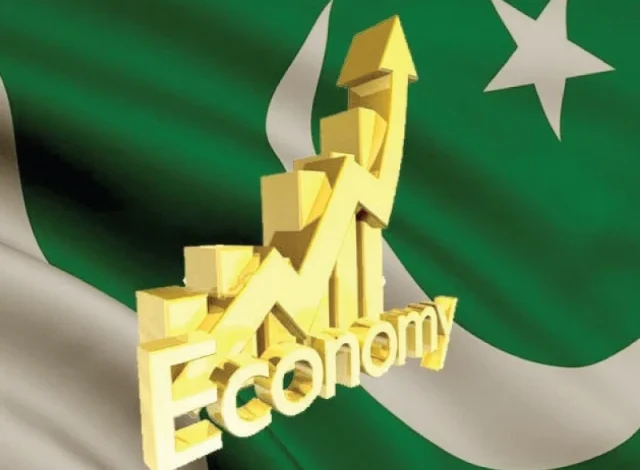Saudi loans keep the Pakistani economy afloat.

With more than $5 billion in loans at an annual interest rate of 4%, Saudi Arabia continues to be Pakistan’s principal source of low-cost international loans. These loans are less than half the cost of foreign commercial borrowing and around one-third cheaper than Chinese cash deposits.
According to official documents, Islamabad recently got two distinct cash deposit facilities from Riyadh, both of which had interest rates of 4%. The loan, which was initially agreed to for a year, has not yet been paid back. According to government representatives, the kingdom has been renewing it every year without charging extra.
According to reports, the Ministry of Finance intends to have a $2 billion Saudi cash deposit facility rolled over once again when it matures in December. Another $3 billion Saudi loan, which was taken out as part of the IMF program to fill the external financing shortfall, will mature in June of next year, they noted.
Saudi Arabia, China, and the United Arab Emirates are Pakistan’s three bilateral creditors, and the IMF has mandated that they keep their cash deposits until the program’s three-year conclusion. The majority of the central bank’s $14.3 billion gross foreign exchange reserves are made up of deposits totaling $12 billion from these nations.
IMF programs are no longer significantly assisting Pakistan as they once did. The central bank had to buy more than $8 billion from the domestic market to cover maturing debt obligations in spite of the package. The global lender’s economic “clean bill of health” is no longer enough on its own, and the Finance Ministry is becoming more and more reliant on the credit guarantees provided by multilateral banks in order to access global markets.
According to the Foreign Office, the historic strategic mutual defense pact that Saudi Arabia and Pakistan inked this week shows their shared commitment to promoting regional peace, strengthening security, and cooperatively deterring any aggression.
The Foreign Office spokeswoman responded that the Pakistan-Saudi relationship is complex when asked about the economic component of the defense deal by an Express News correspondent. One of its most crucial and significant components has been defense. The importance of economic cooperation is equal to that of defense. However, the representative acknowledged that these are distinct tracks within the broader scope.
He went on to say that the Pakistan-Saudi Supreme Coordination Council, a broad structure with three pillars, including an economic one, is in charge of managing the relationship between the two countries. Despite their interdependencies, each of these pillars is intended to improve cooperation on its own. Therefore, the spokesperson said, “economic cooperation is still strong and we look forward to further deepening economic cooperation between the two countries.”
According to sources, Pakistan is paying about 6.1% interest on four cash deposit facilities totaling $4 billion, whilst Saudi loans have an interest rate of 4%. These facilities are substantially more costly than Saudi deposits, with prices set at the six-month Secured Overnight Financing Rate (SOFR) + 1.72%. However, according to sources, the $1.2 billion Saudi Oil facility was acquired at a fixed 6% interest rate.
In view of IMF requirements and Pakistan’s low foreign exchange reserves, the Chinese facilities, which mature between March and July of next year, are also anticipated to be rolled over.
In the previous fiscal year, Standard Chartered Bank offered one of the most expensive foreign commercial loans, extending $400 million for six months at an interest rate of 8.2%. According to sources, the loan was agreed upon at the six-month SOFR plus a 3.9% margin.
According to additional sources, United Bank Limited also secured a $300 million loan for just 10 months at an interest rate of 12-month SOFR plus 3.5%, or 7.2%. Prior to the IMF agreement, the UAE had already lent Pakistan $2 billion at a 3% interest rate; however, in 2024, it secured a last $1 billion credit at a 6.5% interest rate.
Additionally, Pakistan received a $1 billion loan for five years at an anticipated 7.22% interest rate from commercial banks. According to sources, even though the Asian Development Bank gave the foreign lenders partial guarantees, a rate of more than 7.2% is paid.
Additionally, Pakistan is taking advantage of Chinese commercial loans, which are currently being converted from USD to Chinese yuan. These Chinese amenities have different prices. According to sources, the $2.1 billion equivalent Chinese commercial facility is refinanced over three years at an interest rate of about 4.5%.
According to sources, a $300 million loan from the Bank of China is also taken out for two years at a 6.5% interest rate, and an additional $200 million is borrowed at a 7.3% interest rate. At a fixed 4.5% interest rate, a $1.3 billion loan from the Industrial and Commercial Bank of China was obtained.